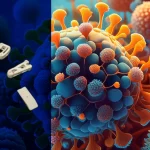A Brief History of CNC Machining & Plastic Machining
An important part of working with any company is understanding what they do; at AIP Precision Machining, plastic CNC machining is what we’ve done best for the past 35 years.
CNC (Computer Numerical Control) machining is a process in the manufacturing sector that involves the use of computers to control machine tools. In the case of plastic machining, this involves the precise removal of layers from a plastic sheet, rod, tube or near net molded blank. This subtractive manufacturing differs from additive manufacturing techniques, such as 3D printing.
The History of CNC Machining
The early history of CNC machining is almost as complex as a modern CNC system. The earliest version of computer numerical control (CNC) technology was developed shortly after World War II as a reliable, repeatable way to manufacture more accurate and complex parts for the aircraft industry. Numerical control—the precursor to CNC—was developed by John Parsons as a method of producing integrally stiffened aircraft skins.
Parsons, while working at his father’s Traverse City, Michigan-based Parsons Corp., had previously collaborated on the development of a system for producing helicopter rotor blade templates. Using an IBM 602A multiplier to calculate airfoil coordinates, and inputting this data to a Swiss jig borer, it was possible to produce templates from data on punched cards.
Parsons’ work lead to numerous Air Force research projects at the Massachusetts Institute of Technology (MIT) starting in 1949. Following extensive research and development, an experimental milling machine was constructed at MIT’s Servomechanisms Laboratory.
CNC machining can be used for a wide variety of materials, but at AIP Precision Machining, we solely machine polymers and composites. This significantly reduces the threat of metallic cross contamination in our products, allowing us to provide the most hygienic devices and components for our clients.
The Complexity of Polymer Machining
There are benefits to machining polymer components over metallic materials, but it’s a mistake to assume both machine the same way. Due to the many different kinds of polymers and composites, it’s important to have strong technical expertise of polymer materials when machining plastic components; some plastics are brittle, for example, while others cut similarly to metal.
The challenge of plastics is their wide range of mechanical and thermal properties which result in varying behavior when machined. Therefore, it’s important to understand the polymer structure and properties of a material if you’re machining it. Having expert material knowledge is essential for this reason, which is why AIP has it as one of our core offerings.
One example of this would be knowing if you’re machining a thermoset or a thermoplastic.
Here are a few polymer machining guides that discuss the specifics of plastic machining various materials:
Want to learn more about AIP Precision Machining’s capabilities?
Explore our extensive plastic machining capabilities here, or if you like, you can contact us to get a quote here.






